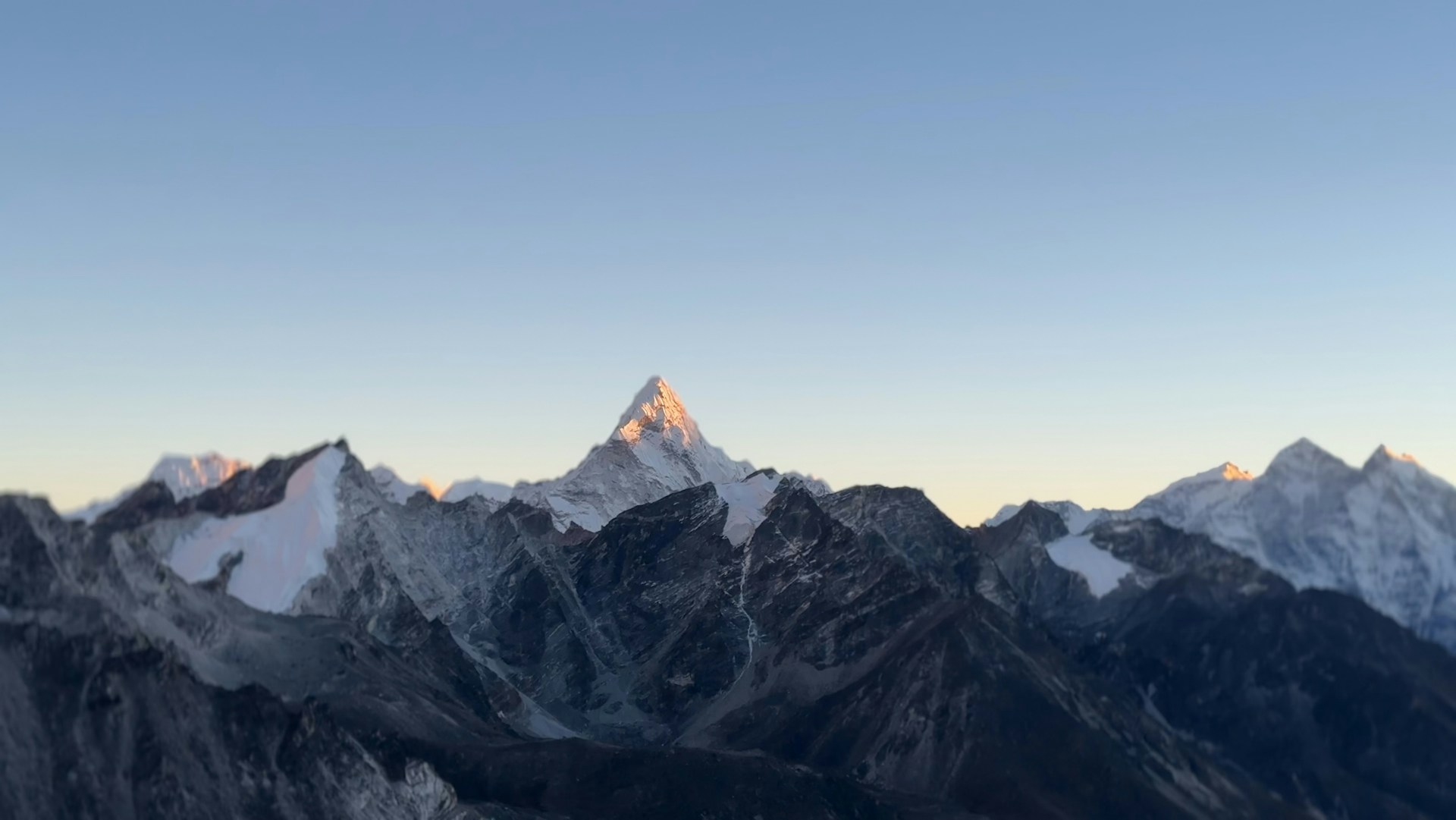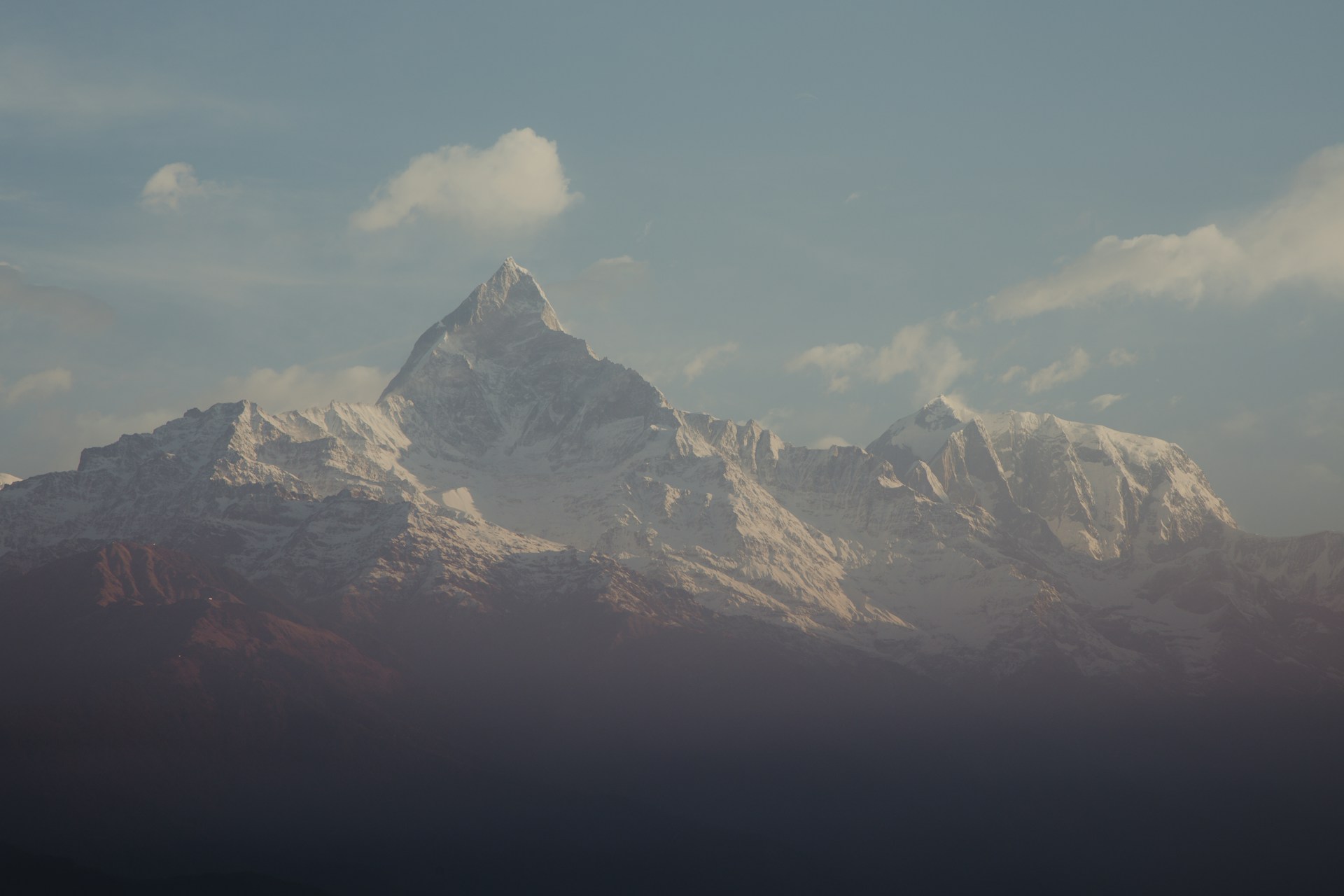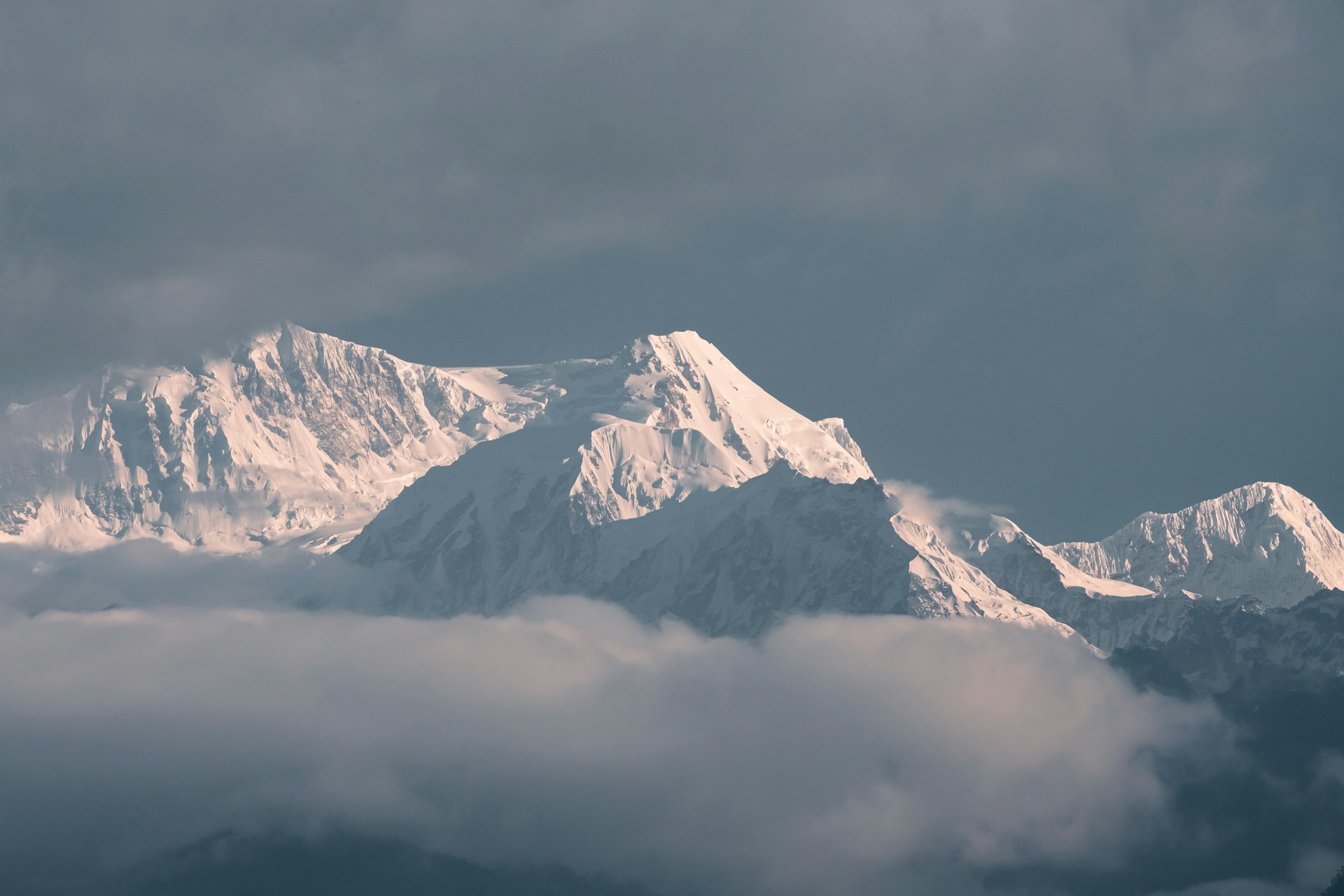Island Peak Himalayas: Top Reasons to Attempt This Iconic Peak

Introduction to Island Peak Himalayas
One of the most popular climbing peaks in Nepal is the Island Peak Himalayas. Known locally as Imja Tse, this beautiful mountain stands at 6,189 meters (20,305 feet) above sea level. In the Everest region of Nepal, inside the famous Sagarmatha National Park, it can be found. The peak rises from the middle of the Chhukung Valley and looks like an island of ice and rock surrounded by tall Himalayan giants. This is how it got its name, “Island Peak.”
The Island Peak Himalayas height makes it perfect for climbers who want to experience real mountaineering at a moderate level. It is often chosen by trekkers who wish to take their first step into peak climbing in Nepal. The trip includes trekking at high altitudes, crossing glaciers, and walking along a ridge at the top that has amazing views of the Himalayas.
Most trekkers start their journey in Lukla, go through Namche Bazaar and the Everest Base Camp trail, and then head toward Island Peak Base Camp, which is about 5,100 meters high. The climb has a great mix of adventure, culture, and natural beauty, which makes it one of the best mountain experiences in Nepal.
Climbing Island Peak Nepal is not only about reaching the summit—it’s also about enjoying the journey through peaceful Sherpa villages, learning about local traditions, and walking among the world’s highest peaks.
For those dreaming of having their own Himalayan adventure, booking the trek through a trusted trekking agency like Skyline Treks ensures a safe, well-organized, and unforgettable Imja tse Peak experience. In the next sections, we’ll explore the route, training, and preparation needed for this exciting climb.
Island Peak Himalayas Overview & Location
Imja Tse, or Island Peak, is one of the most well-known trekking peaks in Nepal’s Everest region. Rising to an impressive 6,189 meters (20,305 feet), it stands proudly among the great mountains of the Island Peak Himalayas. The peak sits within Sagarmatha National Park, a UNESCO World Heritage Site known for its rich culture, rare wildlife, and breathtaking scenery.
Island Peak is close to the Chhukung Valley and is surrounded by huge Himalayan mountains like Lhotse, Nuptse, and Ama Dablam. At an altitude of about 5,100 meters, the Island Peak Base Camp is a great place for climbers to rest and get ready for their ascent.
Here’s a quick overview of Island Peak Himalayas location and features:
- Region: Everest region, eastern Nepal
- Height: 6,189 meters (20,305 feet)
- Base Camp Altitude: Around 5,100 meters
- Local Name: Imja Tse
- Within: Sagarmatha National Park
The Island Peak Himalayas are a great place to go for adventure and see beautiful scenery. Before getting to the base of the mountain, trekkers go through Sherpa villages, cross hanging bridges, and walk next to glaciers. Because of its moderate difficulty, the climb is often chosen by beginners as their first experience of peak climbing in Nepal.
Climbing Island Peak Himalayas also gives adventurers stunning views of the Himalayas, with snow-covered peaks and deep valleys that go on for miles.
Elevation, Difficulty & Best Time to Climb
The Island Peak Himalayas stand at an impressive 6,189 meters (20,305 feet) above sea level. Located in the Everest region of Nepal, this peak offers a perfect mix of adventure and beauty. The Island Peak Himalayas is a great choice for beginner climbers who want to try real high-altitude climbing in the Himalayas because it is so high.
Difficulty Level of Island Peak Himalayas
The Island Peak climb is considered moderately challenging. It does not require advanced technical climbing skills, but trekkers should have good fitness and some trekking experience. There are steep snow slopes, glacier crossings, and walking along a summit ridge on the way up.
Here are a few things climbers should know about the difficulty:
- Fitness: Strong physical endurance is needed for long trekking days.
- Acclimatization: To avoid getting sick, you need to rest and get used to the higher altitude.
- Technical Skills: Basic training in using crampons, ropes, and ice axes is helpful.
Best Time to Climb Island Peak
The ideal time for island peak climbing in Nepal is during the pre-monsoon (spring) and post-monsoon (autumn) seasons.
- Spring (March–May): The weather is stable, the skies are clear, and the rhododendrons are in bloom in the spring (March to May), which makes climbing fun.
- Autumn (September–November): Best time to climb because the weather is calm, the trails are dry, and the visibility is good.
- In the winter, it gets very cold and there is a lot of snow.
- In the monsoon season, there is rain and bad visibility.
With proper preparation, good acclimatization, and support from trusted guides like Skyline Treks, climbing Island Peak Himalayas becomes a safe and rewarding Himalayan adventure. The effort pays off with breathtaking panoramic Himalayan views from the summit.
Island Peak Climbing Route & Itinerary
One of the best things to do in Nepal is to climb the Island Peak Himalayas. The climb includes both a beautiful hike through the Everest region of Nepal and an exciting climb to a high altitude. Most climbers start their journey with a short flight from Kathmandu to Lukla. From there, they follow the famous Everest trail to Island Peak Base Camp, where they will try to reach the top.
Typical 13-Day Island Peak Itinerary:
- Day 1 – Arrival in Kathmandu: Meet your trekking group, check your gear, and get your permits ready.
- Day 2 – Fly to Lukla & Trek to Phakding: Short mountain flight and an easy start to the trek.
- Day 3 – Phakding to Namche Bazaar: From Phakding to Namche Bazaar, you enter Sagarmatha National Park and see your first mountains.
- Day 4 – Acclimatization at Namche Bazaar: Rest and explore Namche Bazaar; take a short hike to nearby viewpoints.
- Day 5 – Namche Bazaar to Tengboche: Visit the famous monastery and see panoramic Himalayan views.
- Day 6 – Tengboche to Dingboche: Trek through alpine forests and traditional Sherpa villages.
- Day 7 – Dingboche to Chhukung Valley: Gentle trail through open landscapes with stunning scenery.
- Day 8 – Acclimatization at Chhukung: Short hikes to prepare for higher altitude.
- Day 9 – Trek to Island Peak Base Camp (5,100 m): Set up camp and take a break before the climb.
- Day 10 – Summit Day (Island Peak Summit, 6,189 m): To get to the top, you have to cross glaciers and the summit ridge.
- Day 11 – Descend to Dingboche: Trek back safely after the summit.
- Day 12 – Dingboche to Namche Bazaar: Retrace the scenic route.
- Day 13 – Namche to Lukla & Fly to Kathmandu: End of the adventure.
Climbers can have a safe and unforgettable Island Peak Nepal experience with breathtaking panoramic Himalayan views if they acclimatize well and plan carefully,
Experience & Views from Island Peak Himalayas
Reaching the summit of Island Peak in the Himalayas is one of the most thrilling and rewarding moments for any trekker. The climb gives a real taste of Himalayan mountaineering while remaining achievable for fit and determined beginners.
The Climbing Experience:
- The climb starts before dawn and goes slowly over glaciers and icy slopes.
- Trekkers use ropes, crampons, and ice axes to reach the summit ridge safely.
- The sense of teamwork, challenge, and achievement makes the journey unforgettable.
Views from the Summit:
From the top, climbers enjoy one of the best panoramic Himalayan views in Nepal. The peaks visible from Island Peak include:
- Mount Everest (8,848 m) – the world’s highest mountain
- Lhotse and Nuptse – towering right beside Everest
- Ama Dablam, Makalu, and Baruntse – shining snow peaks surrounding the Chhukung Valley.
As the morning sun lights up the Himalayas, the sky turns gold, and the glaciers below glow with color. It’s a view that stays with climbers forever — a perfect reward for days of effort and endurance.
Reaching the top of Island Peak Himalayas is more than just a climb; it’s a life-changing journey full of beauty, bravery, and peace.
Gear, Preparation & Permits
Climbing Island Peak Himalayas requires the right gear, good preparation, and proper climbing permits. The climb is 6,189 meters (20,305 feet) high and includes crossing glaciers, climbing snowy slopes, and dealing with cold mountain weather. Being well-prepared makes sure that everything goes smoothly and safely.
Essential Gear for Island Peak Climbing:
- Clothing: Warm jackets, thermal layers, waterproof pants, gloves, hats, and sturdy trekking boots.
- Climbing Gear: Crampons, ice axe, harness, helmet, ropes, and carabiners (usually arranged by trekking agencies).
- Accessories: Sunglasses, headlamp, trekking poles, gaiters, and a warm sleeping bag.
- Backpack: A backpack with a rain cover that holds 50 to 70 liters of personal items.
- Health & Safety: First-aid kit, water bottles, sunscreen, and energy snacks for high-altitude trekking.
Preparation Tips:
- Fitness: A few weeks before the trip, do cardio, hiking, and strength training.
- Acclimatization: To get used to the high altitude and lower your risk of getting sick, stick to the schedule.
- Guided Support: Travel with professional guides from agencies like Skyline Treks for safety and reliable assistance.
Required Permits for the Island Peak Himalayas:
- Climbing Permit: Issued by the Nepal Mountaineering Association (NMA).
- Sagarmatha National Park Entry Permit: If you want to go to the Everest region of Nepal, you need a Sagarmatha National Park Entry Permit.
- TIMS Card: Trekker’s Information Management System card, needed for all trekkers in Nepal.
Before the trip, agencies like our Skyline Treks will get all the climbing permits in Nepal for you. The Island Peak Himalayas have one of the most exciting and doable climbs in the world if you have the right gear, plan ahead, and get the right permits.
Tips, Safety & Conclusion
Climbing the Island Peak Himalayas is an unforgettable journey filled with adventure, challenge, and beauty. It’s important to plan ahead, stay ready, and listen to expert advice along the way to make sure the experience is safe and successful.
Final Essential Tips for Climbers:
- Train Early: A few weeks before the trip, get in shape by hiking, running, and doing strength training.
- Pack Smart: Bring warm clothes, climbing gear, and quality boots suitable for high-altitude trekking.
- Acclimatize Properly: Follow the itinerary carefully and take rest days to adjust to thin air.
- Stay Hydrated: During the hike, drink a lot of water and eat light, healthy meals.
- Hire Local Guides: Professional guides from trusted agencies like Skyline Treks help ensure a safe and enjoyable climb.
Safety Guidelines:
- Always look at the weather before you start climbing.
- Be careful with ropes and crampons, especially when crossing glaciers.
- Bring a first-aid kit and learn how to spot the signs of altitude sickness.
- Before you leave, make sure that all of your climbing permits in Nepal are valid and in order.
Conclusion:
Reaching the summit of Island Peak Himalayas is a proud moment for any trekker. It offers some of the most stunning panoramic Himalayan views and a deep sense of achievement. With the right preparation, guidance, and respect for the mountains, the Island Peak Himalayas adventure becomes more than just a climb—it’s a journey of discovery, courage, and making countless amazing lifelong memories.

